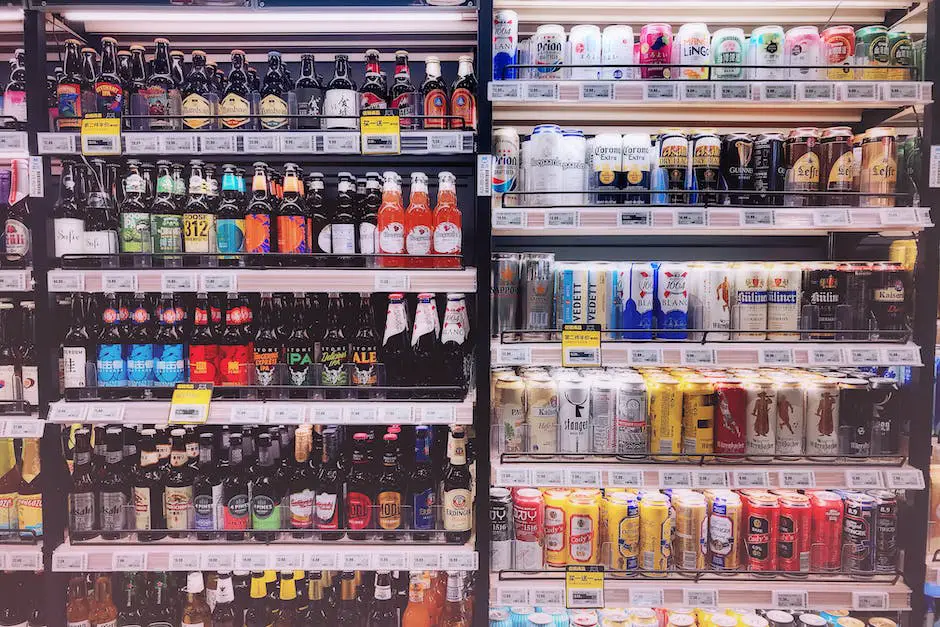Australia, home to kangaroos, koalas, and the iconic Opera House, also boasts a distinctive drinking culture that tells a tale of its history, geography, and shared experiences. From the early influences of European settlers and indigenous practices, through the golden age of local breweries and wineries, to the present-day debate around alcohol and societal health, the multifaceted nature of the Australian drinking culture has invariably proved influential. Embedded within this cultural fabric, the customs surrounding alcohol consumption reveal intriguing insights into what makes Australia, Australia.
Origins and Influences of Australian Drinking Culture
European and Indigenous Influences on Australian Drinking Culture
Part of understanding current Australian drinking culture is tracing its roots back to European settlers and indigenous practices. Like their British forebears, early Australian settlers brought with them a culture of heavy ale consumption as a routine part of daily life. In fact, rum was widely used as a currency in the early days of the colony before formal currency was established. This tended to reinforce a culture of heavy drinking, as any surplus could readily be exchanged for more alcohol.
Contrastingly, indigenous Australians had a vastly different relationship to alcohol before European contact. It’s important to note that some indigenous groups had been fermenting beverages long before Europeans arrived. However, these were primarily used for ceremonial purposes and were not a regular part of their daily diets. Some groups completely abstained from drinking. The imposition of the settlers’ drinking culture was a deeply disruptive influence on these communities and fostered patterns of high-risk alcohol consumption that continue to the present day.
The Influence of Australia’s Unique Climate and Geography
Australia’s unique geography and climate have also shaped its drinking culture in specific ways. The blistering sun and dusty outback landscapes may create picturesque images but they also position beer as a refreshing necessity. The cold beer has become an Australian staple, one that arguably transcends the class, age, and gender divisions that often delineate drinking cultures in other Western societies.
Australian winemaking has similarly been influenced by the country’s climate. Largely dry and arid in the interior with milder, wetter conditions along the coast, Australia produces a variety of wines that are world-renowned for their quality. This variety and accessibility of wines have certainly contributed to the consumption habits of Australians.
In some regions, the isolation of Australia’s rural communities has also influenced drinking patterns. With social opportunities scarce, the local pub often serves as a community hub, a site for social gathering, and consequently, drinking.
Evolution of Drinking Habits in Australia
Drinking habits in Australia have noticeably transformed over the years. Australia, traditionally seen as a beer-drinking nation, has experienced an increased inclination towards wine in recent decades. This shift can be ascribed to a heightened focus on healthy living, with wine often regarded as having health benefits superior to those of beer or spirits. The emergence of craft beers and boutique wineries has also expanded the palette of the Australian consumer, demonstrating a trend towards prioritizing quality over quantity.
Despite the influences of European colonization, native traditions, and the unique geographical and climatic conditions of Australia, contemporary Australian drinking culture chiefly mirrors international trends. Albeit alcohol remains a substantial aspect of many Australians’ lives, there is an emerging tendency towards moderate and thoughtful consumption. This mainly involves selecting quality drinks over mass consumption and taking into consideration the effects of alcohol on personal health and wellbeing. Such a movement indicates a crucial deviation from previous practices of heavy, habitual drinking towards discerning consumption patterns.

Popular Australian Alcoholic Beverages
Beer: Australia’s Traditional Beverage of Choice
Historically, beer has been the favored alcoholic drink in Australia. This preference can be primarily credited to local breweries and the country’s climate, with cool, invigorating beers being a popular choice during hot, summer days. Among the favorite local brands are Victoria Bitter, Carlton Draught, and Tooheys. Lager beer, with its smooth and refreshing taste, is the most preferred variety, although there has been a considerable surge in craft beer popularity recently. This demonstrates the continued diversification of the Australian beer drinker’s palate as they seek out more unique flavor profiles.
Wine: The Emerging Player
Australia also enjoys a thriving wine culture, with the country boasting some of the world’s most prestigious wineries and vineyards clustered mostly in South Australia and New South Wales. Famously known for producing high-quality Shiraz and Chardonnay, Australian wines have gained international reputation and are globally exported. Recent years have seen an increase in local consumption of wine, with many Australians enjoying wine tastings and vineyard tours.
Spirits: A Growing Preference
In the past decade, there’s been a distinct shift in the Australian drinking culture as a growing number of consumers are veering towards spirits. This trend is largely credited to the versatility and diverse range of spirits available. Whisky, including homegrown varieties and imports, is particularly gaining popularity. Australian distilleries are earning renown for their whisky, rum and gin, often utilizing local ingredients to infuse unique flavor profiles.
Changes in Australian Beverage Preference
While beer may still be the traditionally favored drink, wine and spirits consumption has seen a considerable increase in recent years. Changing demographics, evolving tastes and the growing craft industry are influencing Australians’ drink preferences. Locally-produced spirits and wines, along with international imports, are providing Australians with a diverse range of options, leading to these shifts in consumption patterns.
Craft Breweries and Wineries: A Flourishing Industry
Local breweries and wineries continue to be a significant aspect of Australian drinking culture. Craft breweries and boutique wineries have been experiencing a boom, driven by a consumer move towards artisanal, locally-produced drinks. These establishments often focus on unique and experimental flavors, creating products that stand out among commercial beverages. Consequently, they are shaping new trends within the Australian alcohol market.
An Integral Part of National Culture
The consumption of alcohol, particularly beer, is deeply rooted in the cultural fabric of Australia. Often viewed as a catalyst for social interactions, it’s a familiar sight to see Australians savoring a pint with their friends at the local pub or uncorking a bottle of wine during family barbecues. Despite alcohol’s prevalent role in social events, there is a growing emphasis on promoting responsible drinking to advocate for healthier lifestyles in Australia.

Social Impact of Drinking Culture in Australia
The Significance of Alcohol in Australian Social Occurrences and Celebrations
Alcohol is deemed an essential aspect of the social dynamics of Australian life and is often central to numerous festivities, social gatherings, and even daily interactions. The cultural norm of ‘sharing a drink’ is firmly established within Australian lifestyle, with a wide range of occasions such as birthday parties, weddings, barbecues, and public holidays regularly highlighting alcohol as a crucial element.
Alcohol and Sporting Events in Australia
In the realm of sports, Australia’s love for alcohol is also distinctly visible. Consumption of alcohol during games and post-game celebrations is a common practice across all sports levels, from professional leagues to amateur games. Sports viewing, whether in stadiums or at home, is often accompanied by a drink, further reinforcing the link between sports and alcohol consumption.
Drinking as a Means of Relaxing and Bonding
After a long day of work or during a social gathering, Australians often resort to alcohol as a means of relaxation and bonding. The practice of “shouting”, where one person pays for a round of drinks for the entire group, is widely accepted as a gesture of camaraderie and friendship. Many Australians consider pubs and bars as key social venues, where they catch up with friends while unwinding over a drink or two.
Overdrinking and Alcoholism in Australian culture
However, Australia’s love for drinking is also accompanied by an increased prevalence of overdrinking and alcoholism. The Australian Institute of Health and Welfare suggests that one in six Australians consumes alcohol at levels placing them at lifetime risk of an alcohol-related disease or injury. Furthermore, heavy episodic drinking is prevalent among young Australians, leading to concerns about their long-term health.
Effects of Alcohol on Public Health and Safety
The heavy drinking culture in Australia undoubtedly poses substantial challenges to public health and safety. Alcohol-related harm includes not only long-term health issues like liver cirrhosis and certain types of cancer, but also immediate risks such as injuries and alcohol poisoning. It also plays a considerable role in domestic and street violence, causing significant social harm.
Additionally, ‘drink-driving’ remains a critical public safety issue, with alcohol being a recurring factor in many road fatalities.
Alcohol-related Disorders and Burden on Health Services
The prevalence of alcohol use disorders in Australia further exacerbates the strain on public health services. Many Australians are grappling with serious alcohol-related problems, resulting in thousands of hospitalizations each year. The monetary cost of these disorders to the national health system is substantial, in addition to the emotional, physical and financial tolls they inflict on individuals and families.
Although imbibing in alcohol is often seen as an accepted part of Australian culture, the implications of its use and abuse cannot be turned a blind eye to. The task at hand is to recognize this issue, and implement effective strategies to advocate for healthier drinking habits while also respecting Australia’s societal norms and traditions.

Government Regulations and Societal Efforts
Regulation of Alcohol Consumption by the Government
The government of Australia plays a pivotal role in managing alcohol usage to ensure the safety as well as the well-being of its populace. This is primarily achieved by resonating efforts through the Australian National Preventive Health Agency (ANPHA), which puts emphasis on curtailing hazardous drinking behaviours and damage resultant of excessive alcohol intake.
This involves invoking stringent rules about the accessibility and advertisement of alcohol. For instance, alcohol can only be retailed by licensed establishments within a certain time frame, and the promotion of alcohol is strictly controlled to avoid encouraging heavy drinking. Moreover, these laws are vigorously enforced by entities such as the Liquor Control Reform Act 1998, which encourages the minimization of harm and responsible alcohol service. Violations can lead to serious penalties including hefty fines, license revocations, or suspensions.
Taxation and Pricing Policies
One of the key strategies used by the Australian government to regulate alcohol consumption is through the implementation of taxation and pricing policies. This is seen in the Australian excise tax, which is a federal tax that is applied to alcohol products based on their alcohol content. The economic theory behind this taxation is to increase the price of alcohol, thus reducing demand and consumption levels. Consequently, it’s believed to reduce alcohol-related harm and associated social and health costs.
Public Education Campaigns
Public education campaigns are another strategy used to promote responsible drinking in Australia. These campaigns aim to raise awareness of the risks associated with excessive alcohol consumption and encourage responsible drinking behaviors. Prominent public education campaigns include “DrinkWise Australia” and the “Know Your Standards” campaign, which provide information about standard drink sizes and the harm associated with binge drinking.
Research suggests that these campaigns can be effective in shifting attitudes towards alcohol and reducing hazardous drinking behaviors. However, their success largely depends on the campaign’s reach, clarity of message, and the context in which they are delivered.
Community Efforts to Reduce Harmful Drinking
There’s a strong community focus in Australia on reducing harmful drinking. Non-government organizations (NGOs) and community initiatives play a noticeable part in this, offering strategies like Alcohol and Drug helplines, support for families dealing with addiction, and safe social environments that don’t focus on excessive drinking. Advocacy groups like the Foundation for Alcohol Research and Education (FARE) work to raise awareness about alcohol-related harm and promote policy reform.
In conclusion, the Australian government and society make concerted efforts to regulate alcohol consumption and promote responsible drinking.
The combination of governmental regulations, public education campaigns, taxation, and community efforts help create an overall balanced and responsible drinking culture. However, these strategies’ effectiveness varies and requires consistent effort and adaptation to the changing society and drinking trends.

Australian drinking culture, with history absorbed in every sip and reflection in every cheers, is a rich mixture of tradition, preference, and societal norms. Despite the inherent challenges alcohol poses, it remains an integral facet of the Australian identity, straddling the realms of joy, connectedness, and complex social issues. Notwithstanding, through robust governmental regulations and tireless societal efforts, a balance is being sought to preserve the pleasure of responsible drinking and minimize the negative impacts. Ultimately, understanding the drinking culture of Australia means understanding Australia itself, a nation unified in diversity, where the echoes of ‘cheers mate’ resonate far beyond the pub walls.






